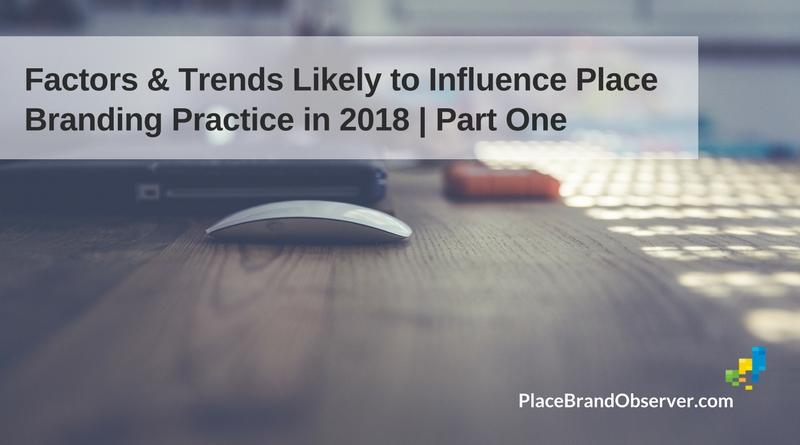Which macro trends are likely to affect the work of place branding professionals in 2018? That’s the question we put to our panel of place brand specialists earlier this year. According to the panel, four main factors are going to have a significant impact on the evolution of place branding initiatives throughout the year.
In this first of four posts, we are going to look at the “Drivers of Change”, i.e. macro-changes in society that, one way or another, will shape people’s thinking. An analysis of the changing role of branding, the power of new technologies, and niche markets will follow soon.
Many of our respondents have, with little surprise, identified the big changes such as Brexit and the new attitude to global markets as one of the driving forces of change. Cecilia Pasquinelli thought Brexit will inevitably lead to rethinking the role of place branding in relation to foreign direct investment promotion, and so did Nikolaj Lubanski. They were not alone. Heather Skinner also saw Brexit as a disruption, and eventually suggested that place branding professionals – both within and outside the UK – would need to consider the issue when creating messages targeted to their stakeholders.
Among all, Sebastian Zenker particularly focused on the current sociopolitical changes and their influence on the industry. He saw the ongoing refugee crisis as an important driver of change. On one hand, there is a need for places to show themselves as open, hospitable, friendly and tolerant, but, on the other, the negative associations and emotions could also be seriously challenging for tourism.
What Zenker also identified is the recent development of “close mind-sets and nationalism”, something drastically pushing the de-construction of place brands and creating a hurdle on the way to international attractiveness for tourists and talents. According to him, it is vital to find a solution that takes “the fear and concerns of the residents serious, while keeping them open and tolerant for further changes and other social and cultural groups”.
Some of our respondents thought of the spatial aspect of place branding. Pasquinelli saw rethinking brand communication an essential need, and projects and identity building as a response to urban crisis. Eduardo Oliveira, instead, focused on environmental concerns, particularly landscape conservation. Something that, according to him, must be integrated in the place branding practitioners’ agenda throughout 2018.
Gary Warnaby pays more attention to time. He urges us to think of the perception of time in an urban context and how the changing pace and patterns of urban life is managed and branded. A true reflection of the implications different usages of space can generate in the ever-changing consumption patterns.
Back in the early 2000s, the likes of Thomas Davenport and Matthew Crawford pointed out that human attention is a scarce commodity – a very limited resource. Almost two decades later, Gunter Soydanbay [Soydanbay Consulting] thought the attention economy to be as relevant as ever when re-thinking place branding strategies. According to his argument, place branding professionals need to either create captivating content or use data to target micro-segments.
Further commenting on the current media culture, Soydanbay even suggested there is a tectonic shift in the way audiences perceive countries, and, comparatively, the names such as Trump, Putin and Erdogan have become more prominent than the US, Russia and Turkey respectively. In his words, “place brand professionals will spend 2018 by either riding the wave or by putting out the fire caused by their leader”.
Analysis and writing by TPBO research associate Maja Jović.


